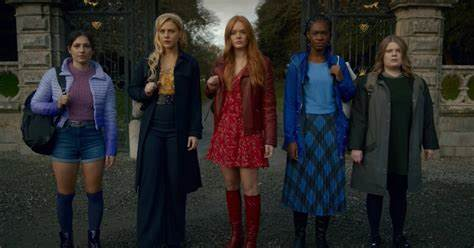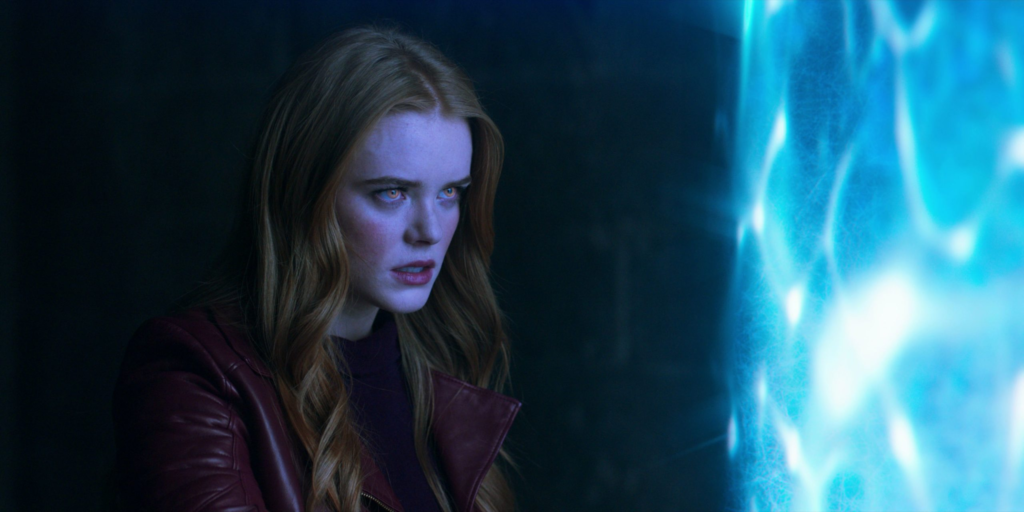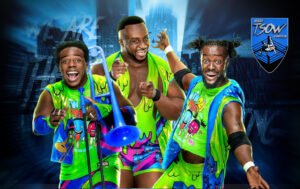Fate: The Winx Saga – A Dark Twist on a Classic

Fate: The Winx Saga, a Netflix teen drama series, serves as a live-action adaptation of the popular Italian animated show Winx Club, created by Iginio Straffi. While retaining core elements of the original, Fate presents a significantly darker and more mature take on the magical world of fairies and their struggles. This article delves into the series’ origins, characters, deviations from the source material, critical reception, and overall impact, exploring why it has sparked both excitement and controversy among fans.
From Animation to Live Action: Adapting the Winx Club
Winx Club, which debuted in 2004, captivated a young audience with its vibrant animation, catchy music, and stories of friendship, magic, and self-discovery. The show followed Bloom, a teenage girl who discovers she is a fairy from the magical realm of Magix, and her adventures with her friends, the Winx Club. When Netflix announced a live-action adaptation, fans were eager to see how the beloved animated series would translate to a new medium.
However, it quickly became apparent that Fate: The Winx Saga would be a departure from the lighthearted tone of its source material. The shift towards a darker, more realistic aesthetic and narrative was a deliberate choice by the show’s creators, aiming to appeal to a young adult audience. This decision, however, proved to be a major point of contention for many longtime fans of the original animation.
The Core Characters: Familiar Faces with New Interpretations
Fate: The Winx Saga features reimagined versions of the core Winx Club members: Bloom, Stella, Flora, Musa, and Terra (a reimagining of Tecna). Bloom, played by Abigail Cowen, remains the central protagonist, a fire fairy discovering her powers and her connection to the Otherworld. Stella, played by Hannah van der Westhuizen, is the light fairy and a princess of Solaria, portrayed with a more complex and troubled personality than her animated counterpart. Flora, originally a nature fairy, is reimagined as Terra, an earth fairy played by Eliot Salt.
Terra is a kind and intelligent character, but also insecure and socially awkward. Musa, played by Elisha Applebaum, retains her role as a music fairy but with a more introspective and emotionally vulnerable portrayal. Aisha (originally Layla in the cartoon), played by Precious Mustapha, is the water fairy, athletic and determined. While these characters share names and some core traits with their animated counterparts, Fate delves into their backstories and relationships with a greater level of psychological depth, often exploring darker themes such as trauma, identity, and self-doubt. This darker character development was a key difference from the original series, leading to both praise for its depth and criticism for straying too far from the source material.
Key Deviations from the Source Material: A Source of Controversy
One of the most significant points of contention for fans of the original Winx Club was the numerous deviations from the source material in Fate: The Winx Saga. These changes ranged from character alterations to plot developments and overall tone. The most notable changes included the absence of Tecna, replaced by the original character Terra, the downplaying of the Winx’s iconic transformations and wings, and the removal of certain magical elements and creatures present in the animation.
The show’s darker tone, focusing on themes of death, violence, and interpersonal conflicts, also differed significantly from the lighthearted and optimistic tone of the original. These changes sparked debate among fans, with some appreciating the fresh perspective and others criticizing the show for straying too far from the beloved source material. The lack of the iconic transformations, a key element of the original show’s visual appeal, was a particular disappointment for many.
The World of Alfea and the Otherworld: A Darker Aesthetic
Fate: The Winx Saga is set primarily at Alfea, a magical boarding school in the Otherworld, a parallel dimension to Earth. The Otherworld is depicted with a darker, more grounded aesthetic compared to the vibrant and fantastical world of Magix from the animated series. The magical elements are also portrayed with a more realistic approach, focusing on elemental magic and less on the fantastical creatures and transformations that were prevalent in the original. While the show retains some familiar locations and concepts from the Winx Club universe, it presents them in a way that is more in line with the show’s darker and more mature tone. The visual style of the show, with its muted colors and realistic settings, further emphasizes the departure from the bright and colorful aesthetic of the animation.

The Plot and Storylines: Exploring Deeper Themes
Fate: The Winx Saga explores more mature themes than its animated predecessor, delving into topics such as identity, trauma, loss, and the complexities of interpersonal relationships. The plot revolves around Bloom’s journey to understand her powers and her connection to the Otherworld, while also navigating the challenges of friendships, romance, and the dangers that threaten Alfea.
The show introduces new conflicts and storylines that are not present in the original series, often focusing on darker themes such as the threat of the Burned Ones, ancient magical beings, and the political intrigue within the magical realm. The storylines in Fate often explore the moral ambiguities of the characters’ actions and the consequences of their choices, adding a layer of complexity that was not present in the original animation.
Critical Reception and Audience Response: A Mixed Bag
Fate: The Winx Saga received a mixed reception from critics and audiences. While some praised the show for its darker and more mature take on the Winx Club universe, others criticized it for straying too far from the source material and for its perceived lack of diversity in casting. The show’s visual style, acting performances, and exploration of deeper themes were generally well-received, but the deviations from the original story and characters were a major point of contention for many fans. The show’s initial reception was particularly critical regarding the whitewashing of certain characters and the lack of body diversity. This led to significant backlash and prompted the show’s creators to address these concerns in subsequent seasons.
Addressing Criticism and Evolution in Subsequent Seasons
In response to the criticism received after the first season, Fate: The Winx Saga made efforts to address some of the concerns raised by viewers. The second season introduced more diverse characters and storylines, attempting to rectify the perceived lack of representation in the first season. The show also began to incorporate more elements from the original animation, such as the iconic transformations, albeit in a more grounded and realistic way. While these changes were welcomed by some fans, others felt that they did not fully address the core issues with the adaptation. The show’s willingness to listen to feedback and make changes demonstrated a commitment to engaging with its audience, but it also highlighted the challenges of adapting a beloved source material with a dedicated fanbase.
FAQs
What is Fate The Winx Saga about?
Fate: The Winx Saga centers around Bloom, a teenager with powerful fire-based magic, who enrolls at Alfea, a prestigious school for fairies. Bloom, who struggles with her powers and her identity, must navigate her way through the challenges of being a fairy in a world filled with magical creatures, dark forces, and the secrets of her past. The show explores Bloom’s personal journey, the relationships she builds with other students, and the ongoing threat posed by dark magical forces.
What distinguishes the original Winx Club from Fate The Winx Saga?
Fate: The Winx Saga differs significantly from Winx Club in tone and style. While the original animated series is lighthearted and aimed at younger audiences, the live-action adaptation targets a more mature demographic, with darker themes, complex character arcs, and a deeper exploration of magical powers. The show also reimagines the characters, presenting them with more realistic, grounded personalities, and the magic is treated with more gravity, in contrast to the often whimsical approach seen in the original.
Who are the main characters in Fate The Winx Saga?
The main character is Bloom (played by Abigail Cowen), a fire fairy with a troubled past. Other key characters include Stella (Hannah van der Westhuysen), the confident and powerful fairy of the sun; Aisha (Precious Mustapha), a fairy with control over water; Musa (Elisha Applebaum), a fairy who can read minds and emotions; and Terra (Eliot Salt), a fairy with the power of earth. The show also features several human characters, including Sky (Danny Griffin), a member of Alfea’s security team, who becomes Bloom’s love interest.
To read more, Click here



Leave a Comment